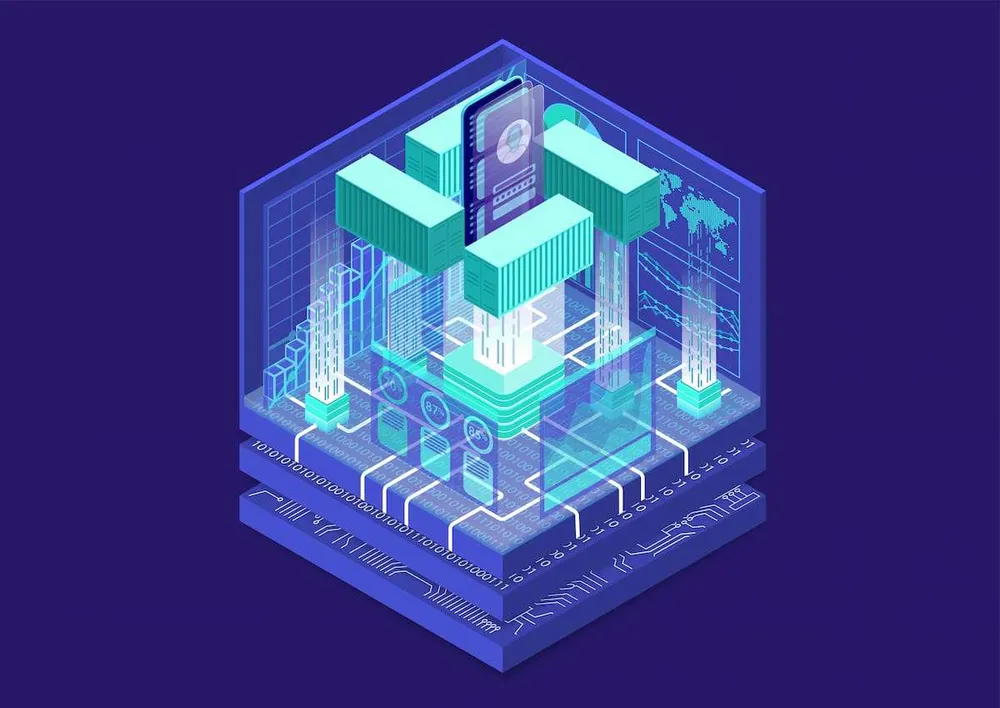Heavy.AI is a powerful synthetic intelligence platform that enables businesses and developers to easily build and deploy AI-powered purposes. Heavy.AI is constructed on top of the popular TensorFlow open-source library, making it easy to get began with deep studying and neural networks. With Heavy.AI, you can shortly prepare and deploy your customized fashions or use one of the many pre-trained fashions out there in the Heavy.AI market. The World Financial Discussion Board reports that the whole digital world is predicted to reach forty four zettabytes by 2020.
The web of things (IoT) is a system of interconnected devices, sensors, and software program components that share information and knowledge. The energy of the IoT comes from its capacity to gather and analyze large volumes of information from numerous sources. This data can be utilized to enhance effectivity, optimize operations and make better selections. Fog computing, positioned at the edge of the cloud, intermingles with clients wherever they are positioned. Typically, this could be a consumer setting, similar to your personal house or car, while other times, it’s a business curiosity, corresponding to price-monitoring gadgets in a retail store or vital safety sensors on a manufacturing unit flooring.
- In addition, the flexibleness of fog computing allows higher useful resource allocation, dynamic scalability, and an general more responsive network infrastructure.
- Processing data at the stage of the automobile using a fog computing technique via an onboard car processing unit is a vital part of sharing the constrained mobile bandwidth.
- Fog computing is a transformative paradigm that extends cloud computing capabilities to the sting of the network, closer to where information is generated and consumed.
- Fog computing, by contrast, can outnumber its potential purchasers without risking a bottleneck as a end result of the units carry out a lot of the information collection or computation.
- Edge gadgets are a sort of fog computing that serves as the spine of fog computing systems.
Nonetheless, both fog and edge computing are designed to cope with Digital Logistics Solutions one key problem—latency and response time. Fog Computing is the time period introduced by Cisco that refers to extending cloud computing to an fringe of the enterprise’s community. It facilitates the operation of computing, storage, and networking providers between end units and computing knowledge centers. Edge computing, a distributed computing mannequin, processes data and purposes at the edge of the community, close to the information source. By distinction, within the conventional centralized model of cloud computing, data and purposes are stored in a central location and accessed over the network. Fog computing can be utilized to support a broad range of applications that require knowledge to be processed on the edge of the community.
After all, an industrial plant that is utterly networked produces several hundred terabytes of knowledge every day. This leaves huge volumes of knowledge that can’t be centrally handled utilizing well-established applied sciences or wirelessly downloaded from the cloud. Smart cities and good grids Like linked cars, utility methods are increasingly utilizing real-time information to extra effectively run methods. Typically this information is in distant areas, so processing near the place its created is crucial. IFogSim can be an open-source fog computing simulator that can consider the performance of different fog computing architectures.
Fog computing is preferred over edge computing, based on proponents, since it’s more scalable and supplies a greater general view of the community as a end result of it receives data from several knowledge factors. So-called sensible manufacturing, more than the interconnectedness of day by day objects, presents new difficulties for established cloud architectures. Under the context of Trade 4.0, IoT develops into a crucial know-how for industrial services. The group Smart Manufacturing Management Coalition (SMLC) is in cost of the public-private effort “smart manufacturing”. The objective is for industrial vegetation and logistics networks to autonomously arrange work operations whereas growing energy and production efficiency. Fog computing is the concept of a distributed community that connects these two environments.
Decreased Bandwidth
And in addition to, if there’s already a cloud representing nodes of a knowledge heart, then there’s absolutely something unique concerning the nodes intermingling with us people outdoors that cloud. Fog computing reduces latency by processing knowledge nearer to the sting, improving response occasions, and enhancing person experience in real-time applications. Cloud computing centralizes data processing in the cloud, whereas it brings closer to the sting of the network, reducing latency.
Networking Phrases And Definitions
Quickly, cloud computing for IoT could fade away but fog computing will take over. IoT is seeing a formidable development fee and so it wants a particular infrastructure base that can handle all its requirements. Reach out to Fingent, the main custom software improvement firm, and embark on a transformative journey for your small business right now. The cloud is getting cluttered as a end result of huge variety of units connecting to the web. Since cloud computing is not viable in some instances, it has turn into essential to use fog computing for IoT devices. It so occurs that the term “cloud computing” is already occupied, so there wants to be a singular name for the network comprised of the Web of Issues (IoT) and other strategically situated servers.
Since fog computing is decentralized, you will need to rely on the people near your network edge to maintain up and protect your fog nodes. It may even be tough to hold up any centralized security management over your fog nodes. Time-sensitive knowledge like alarms, fault warnings, and gadget status tremendously advantages from the velocity of edge computing. This data needs to be analyzed and acted upon quickly so as to prevent major injury or loss. The cloud is great for decentralized entry to resources and data, however cloud computing struggles to keep up with the pace and effectivity demanded by the influx of information supplied by IoT expertise. Fog computing can optimize data analytics by storing info closer to the info source for real-time analysis.
Smart Cities
The underlying computing platform can then use this data to operate site visitors indicators extra effectively. You can access the cloud from anyplace, however on a decentralized fog computing system, you need to be in the native area of your fog node to find a way to access the network. Fog computing uses the concept of ‘fog nodes.’ These fog nodes are located closer to the info supply and have higher processing and storage capabilities.
In addition, the flexibility of fog computing enables higher useful resource allocation, dynamic scalability, and an total more responsive network infrastructure. Fog and edge computing provide similar functionalities when it comes to https://www.globalcloudteam.com/ pushing intelligence and data to nearby edge gadgets. Nonetheless, edge computing is a subset of fog computing and refers simply to information being processed near the place it is generated.
It could include fog computing gateways that accept data IoT devices have collected. It may include a selection of wired and wireless granular assortment endpoints, together with ruggedized routers and switching equipment fog computing vs cloud computing. Different aspects might embrace customer premise tools (CPE) and gateways to access edge nodes. Higher up the stack fog computing architectures would additionally contact core networks and routers and ultimately global cloud providers and servers. Any device having processing storage and community connectivity could be a fog node in fog computing and placed on a railroad monitor or a gas station. Using solely microcontrollers and microchips, Mist computing is lightweight computing within the network web.

